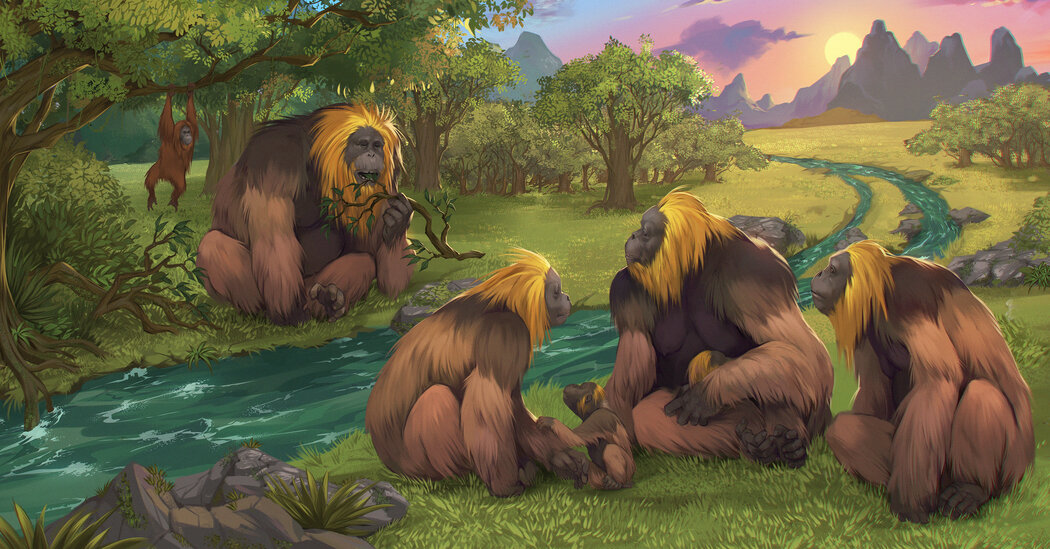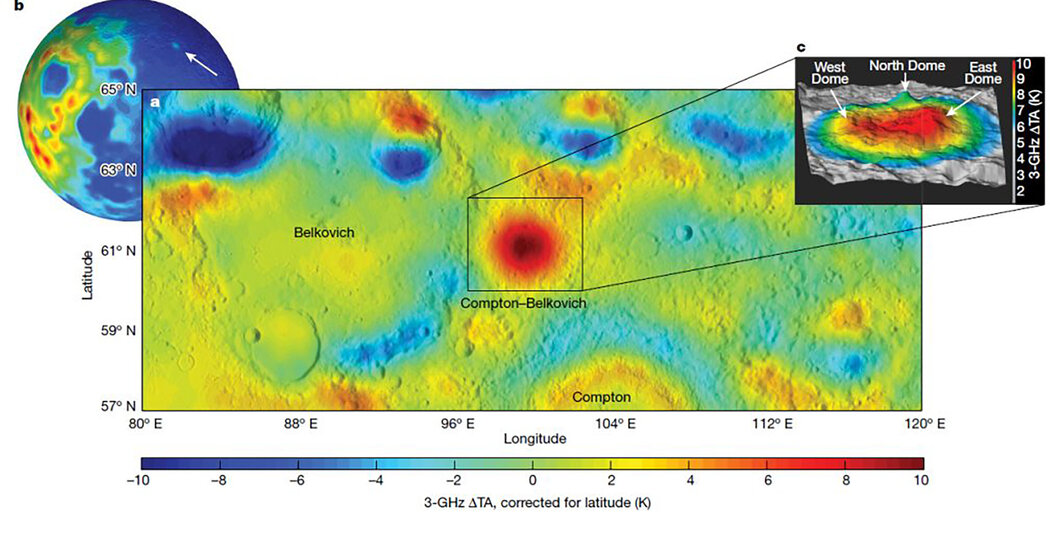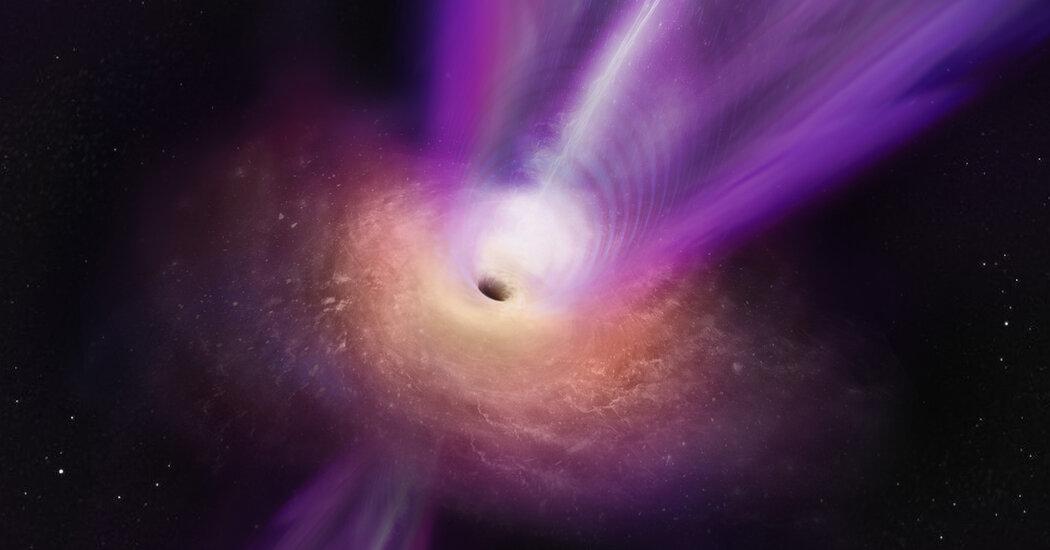Standing nearly as tall as a basketball hoop and weighing as much as a grizzly bear, Gigantopithecus blacki was the greatest ape to ever live. For more than a million years during the Pleistocene, Gigantopithecus roamed southern China. But by the time ancient humans reached the region, Gigantopithecus had vanished. To determine why these prodigious primates died out, a team of scientists recently analyzed clues preserved in Gigantopithecus teeth and cave sediment. Their findings, published Wednesday in the journal Nature, reveal that these nearly 10-foot-tall apes were most likely doomed…
Tag: Nature (Journal)
Scientists Have Found a Hot Spot on the Moon’s Far Side
The rocks beneath an ancient volcano on the moon’s far side remain surprisingly warm, scientists have revealed using data from orbiting Chinese spacecraft. They point to a large slab of granite that solidified from magma in the geological plumbing beneath what is known as the Compton-Belkovich Volcanic Complex. “I would say we’re putting the nail in the coffin of this really is a volcanic feature,” said Matthew Siegler, a scientist at the Planetary Science Institute, headquartered in Tucson, Ariz., and who led the research. “But then what’s interesting is, it’s…
A Fresh View of an Increasingly Familiar Black Hole
A patch of pure nothing in a faraway galaxy has lately become the gravitational center of attention for radio astronomers. That would be a giant black hole, with the gravity of 6.5 billion suns, that spits high-energy particles from the center of the galaxy Messier 87, which lies some 50 million light-years from Earth. In 2019, astronomers operating a network of radio telescopes known as the Event Horizon Telescope dazzled the world by producing a radio map of the entity — the first-ever image of a black hole. It showed…
Fossilized Fish Reveal Earliest Known Prequel of ‘Jaws’
Mention the ocean, and it’s hard not to think of jaws. The deep waters contain many tooth-lined mouths: the bear-trap maws of sharks and dolphins, the slack lips of shoaling and reef fish, the baleen-filter gape of enormous whales. Jawed fish eventually crawled out of the seas millions of years ago and gave rise to the jawboning vertebrates we are today. But when did such an evolutionary innovation arise? A pair of fossil beds discovered in Southern China suggest that the answer may lie tens of millions of years deeper…
‘Window Is Rapidly Closing’ to Gather Key Evidence on Virus Origins, Scientists Say
Experts studying the origins of the coronavirus for the World Health Organization warned on Wednesday that the inquiry had “stalled” and that further delays could make it impossible to recover crucial evidence about the beginning of the pandemic. “The window is rapidly closing on the biological feasibility of conducting the critical trace-back of people and animals inside and outside China,” the experts wrote in an editorial in the journal Nature. Several studies of blood samples and wildlife farms in China were urgently needed to understand how Covid-19 emerged, they said.…




